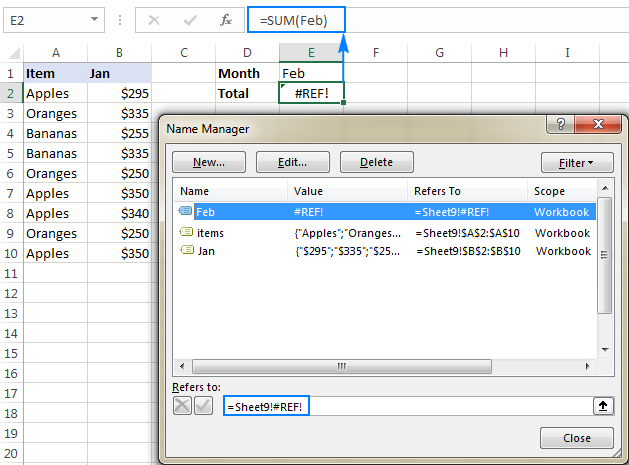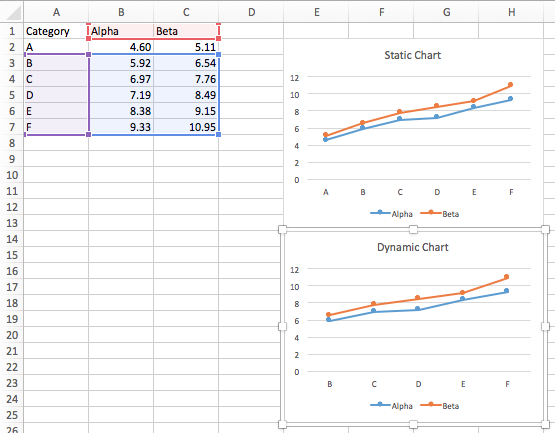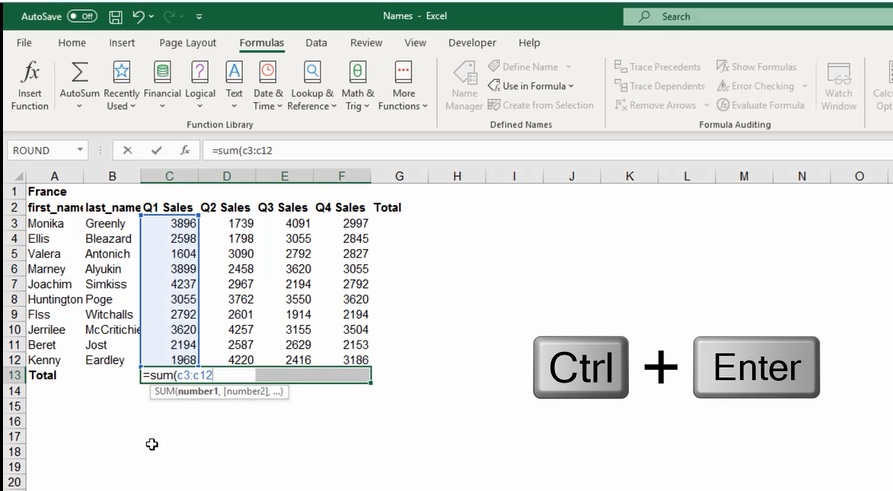


Now to check whether we could implement the dynamic named range in the Excel chart properly, put two more rows to the dataset. Step 4: Checking the Use of Dynamic Named Range in Excel Chart Read More: How to Dynamically Change Excel Chart Data (3 Effective Methods) As the output, we’ve got the scatter plot showing the Year– Population relation.To save all these settings, click on the OK button in the Select Data Source.Similarly, put “ =Sheet1!Population”, the other dynamic named range i.e., Population in the Series Y values input box.Here, the dynamic named range Year belongs to Sheet1, as we defined earlier. Then, put “ =Sheet1!Year” in the Series X values input box as we want to display the year values in the x ordinate.Click on the header of the column “ Population in Billions” to set the series name.In the Select Data Source window, click on the Add button.There is an empty chart appeared on the worksheet.From the options choose your preferable one.Go to the Insert tab in the Excel Ribbon.Select an empty cell in the worksheet at a suitable place.Let’s follow the moves below to accomplish this. Now we’re going to use the dynamic named ranges in an Excel chart. Step 3: Implementing the Use of the Dynamic Named Range in Excel Chart How to Remove Named Range in Excel (4 Quick Methods).Excel VBA to Create Named Range from Selection (5 Examples).

How to Paste Range Names in Excel (7 Ways).Read More: Create a Dynamic Chart Range in Excel (2 Methods) Here we subtracted 1, as the column has a header. We used the COUNTA function to count all the no empty cells in column B. Rows- a row offset, set it to 0 in our formula.Ĭols- a column offset, set it to 0 in our formula. Reference– the starting point, in our formula, Sheet1!$B$2- is the first cell value in the Year column. The function returns a reference to a range, where Then in the input box named Refers to, put the following formula–.In the Scope dropdown list, select the Sheet1 option as our dataset is in the Sheet1 of the workbook.In the New Name window, type Year (same as the header name, for convenience) in the Name input box.Go to the Formulas tab in the Excel Ribbon.To make our dataset a dynamic named range, follow the instruction below. Step 2: Creating the Dynamic Named Range to Use in Chart in Excel Read More: How to Use Named Range in Excel VBA (2 Ways) It means when we add a new row of data the range will expand accordingly. We want to make the dataset a dynamic named range. In this article, we’re going to use the following dataset that illustrates the growth of the world population from 1950 to 2020. Step 1: Preparing a Dataset for Dynamic Named Range in Excel The dynamic named range is a feature in Excel that adjusts the range automatically when we add or remove data to the range. Use Dynamic Named Range in Chart in Excel (Step by Step Analysis)


 0 kommentar(er)
0 kommentar(er)
